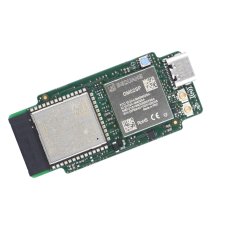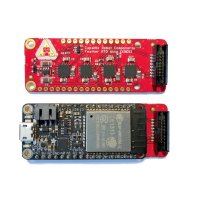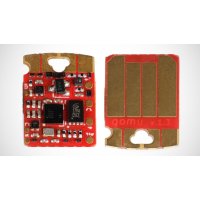Walter is a small-form-factor IoT system-on-module (SoM) that combines a powerful ESP32-S3 system-on-chip (SoC) with a second-generation Sequans GM02SP LTE-M/NB-IoT 5G modem and GNSS receiver. Its ESP32-S3 provides many built-in peripherals as well, including UART, SPI, I²C, CAN, Wi-Fi b/g/n, and Bluetooth 5. Walter is the only module that packs all of these connectivity options into such a small package.
1. 5G Modem & GNSS receiver
2. Reset button
3. USB Type-C
4. 5G antenna connector
5. GNSS antenna connector
6. Integrated GNSS LNA + SAW
7. 3.3 V out software switch
8. Ultra low sleep current DC-DC
9. ESP32-S3 SoC
10. Wi-Fi & BLE antenna
11. 2.54 mm pin headers
12. Test pads
13. Nano SIM slot
Open Hardware Powered by Open-Source Software
To help you get the most out of Walter, we have published the schematic and the KiCAD footprint, both of which are available on GitHub, along with our datasheet, which describes all pins and test pads so you don’t have to go hunting for them.
Walter comes with a range of fully open-source software libraries so you can jumpstart your 5G IoT project in minutes using your preferred languages and toolchains. It supports ESP-IDF, Arduino, MicroPython, and Toit. No special dongles are needed to program Walter – just connect it directly to your dev machine using a regular USB Type-C cable.
Our embedded-software team is continuously improving Walter’s open-source libraries, which you can find in our GitHub repo. These libraries are optimized for flexibility and ease-of-use, with a particular emphasis on:
- Low power: Ours is the only open source AT command library that uses condition variables instead of active wait, which keeps the load on the ESP32 processor extremely low.
- Transparent protocol offloading: Other solutions use the modem purely as a data source and sink, which means high-level protocols—such as CoAP, MQTT, HTTP and their secure TLS or DTLS variants—are all handled in the host processor. This not only consumes a lot of memory, it also decreases efficiency. Our libraries offload these protocols to the Sequans GM02SP modem, on which they have been tested by millions of users.
- Error handling: Cellular communication can fail in various ways, and good error handling is essential for product reliability. Our libraries provide extensive error handling to help you acquire and maintain a reliable cellular connection.
- Easy integration: We will continue maintaining, improving, and expanding our libraries throughout the lifetime of Walter. That includes a wide range of sample projects designed to get you up and running as quickly as possible.
More Than a Development Board
Evolving a prototype into a commercial offering is the most daunting stage of product development. Walter aims to reduce this complexity, especially for low- to medium-volume production. It is the perfect entry point for businesses looking to develop their own 5G connected IoT products.
- How did we approach the challenge of designing a board like this? First of all, you will find no unnecessary components on Walter. There are no sensors, no RGB LEDs, and no charging circuits, to name just a few intentional omissions. Each of these "features" would have increased Walter’s cost while sitting unused most of the time for most applications. Instead, you will find a number of test pads, on the bottom of the board, which can be used to automate firmware flashing and product testing.
- Secondly, we have certified Walter for FCC, CE, UKCA, IC, and RCM (for Australia and New-Zealand). Unless you add another radio to your Walter-based product, your certification costs and risks will be minimal.
- Next, our team has years of experience in embedded development, so we know that most dev boards are only available for a few years, which can be a problem because IoT products are often deployed in the field for much longer than that. Reliable, long-term support is essential for IoT products, so we have negotiated contracts with our component suppliers that allow us to guarantee availability for a minimum of ten years.
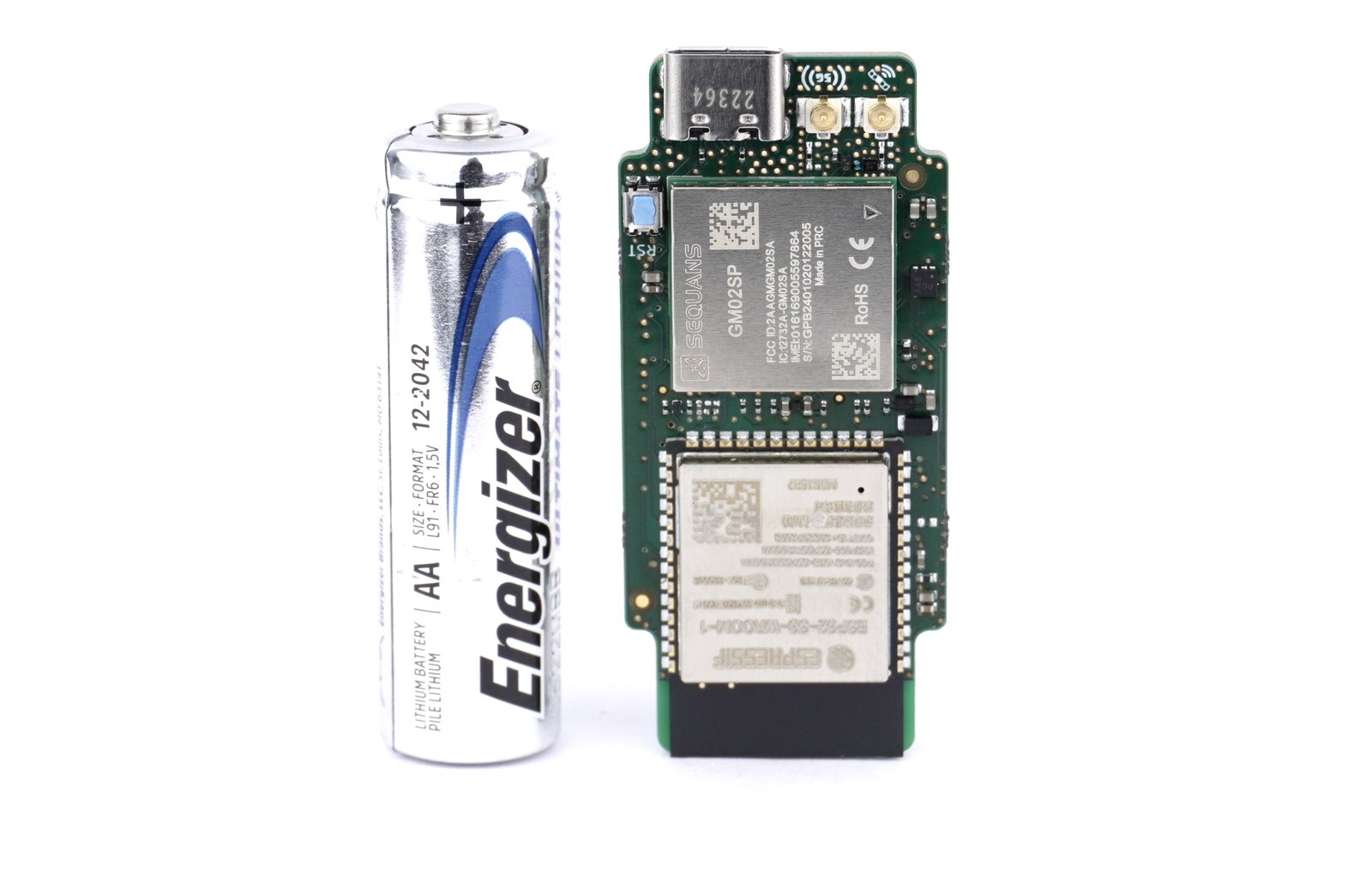
Finally, did we mention how small we made it? Walter is only 24.8 x 55 mm, so it will fit in just about any product. In fact, we’re not aware of any possible way to make a smaller standalone board with support for these RF technologies.
Finally, did we mention how small we made it? Walter is only 24.8 x 55 mm, so it will fit in just about any product. In fact, we’re not aware of any possible way to make a smaller standalone board with support for these RF technologies.
Ultra Low-Power Deep Sleep
For many battery-powered applications, Walter will spend most of its time in deep sleep. It is therefore critical that we consume as little power as possible in this mode, which was among our key requirements during the design stage. We are extremely proud of the result and have validated that Walter only consumes 9.8 µA in deep sleep mode:
- 8 µA for the ESP32-S3
- 1 µA for the GM02SP
- 0.8 µA for the DC-DC and LDO power converter
As a result, Walter can sleep for over 34 years on a single 18650 cell with an average capacity of 3000 mAh.
Compatible With the Former PyCom GPy
There are many products on the market that are based on the PyCom GPy, which is EoL and no longer available. Walter is fully pin compatible with the GPy and can be swapped in without redesigning carrier boards. PyCom’s closed-source solution suffered from various hardware shortcomings, as well. We have addressed all of those issues, making Walter not just a replacement, but a serious upgrade. Have a look at this wonderful feedback we received from one of our beta testers:
- We have converted our GPy application over to Walter with good results. Key points include:
- Our hardware design has not changed. The Walter was a plug-in replacement for the GPy.
- Minor changes to the code were required due to different pin assignments.
- The biggest change we made was switching from using the thread module to using the asyncio module. This change was just an improvement we made to our code. The thread version also worked although MicroPython has limitations of what can be done in the interrupt routine (see Schedule for workaround).
- All our code for talking directly to the modem with AT commands works perfectly. We do not use the Walter modem routines at all. The modem is backward compatible with the GPy.
- One great improvement with Walter is the ability to reset the modem from the software directly.
- Another great feature is that we can now run the latest version of MicroPython unchanged with Walter (a fork is not required).
Thanks for the great work!
Tommy Lanier, Computer Engineered Solutions, Inc.
Pre-Certified Antennas
Walter has a built-in Wi-Fi and Bluetooth antenna but relies on external antennas for optimal LTE-M/NB-IoT and GNSS operation. It includes two u.FL connectors for this purpose. We have chosen Taoglas as our recommended antenna partner because of their quality and their ten-year availability guarantee. The antennas in our devkit are adhesive, which makes them easy to integrate into your products by attaching them to an enclosure.
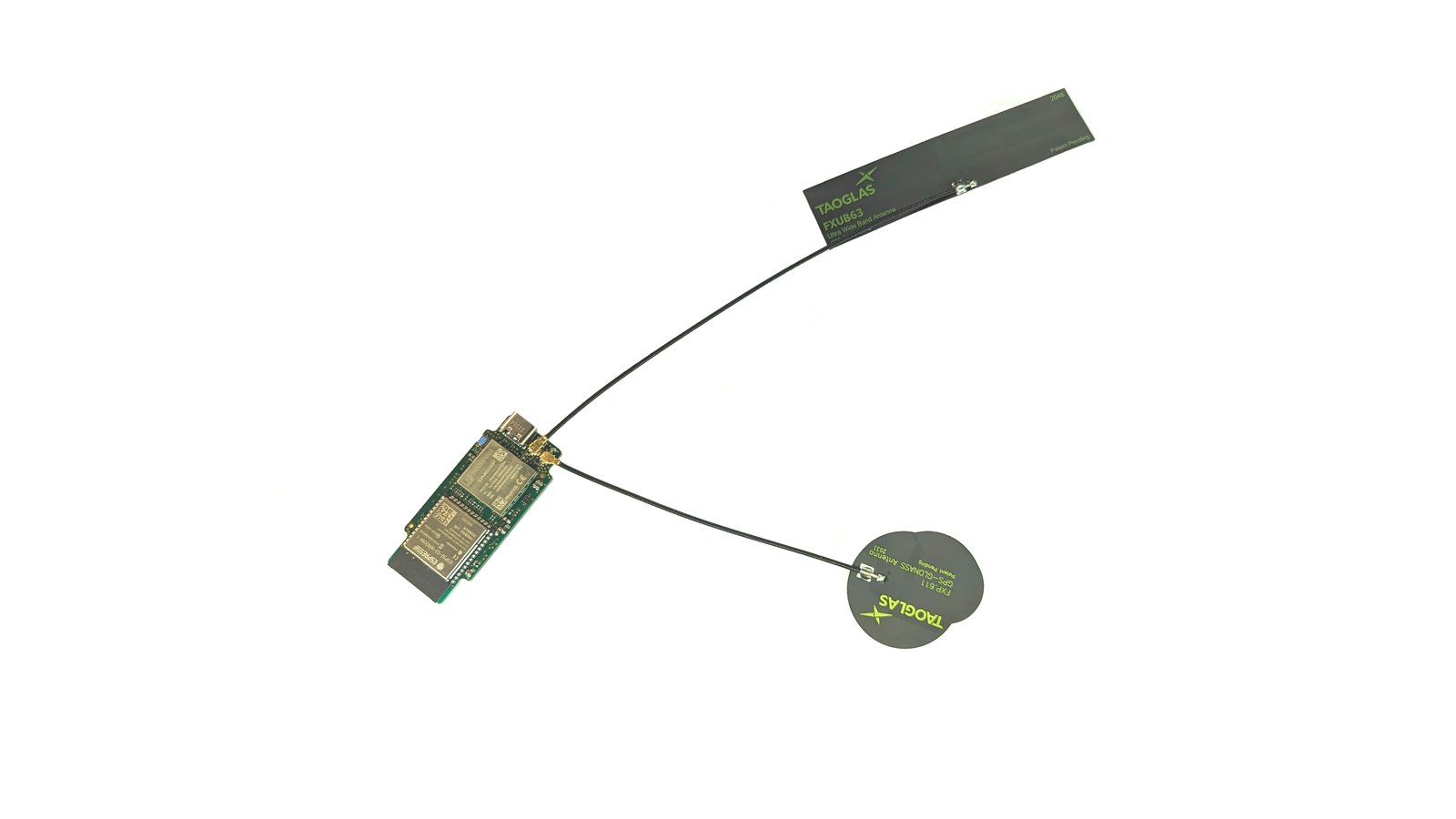
The Walter Feels Carrier Board
Although it is possible to use Walter as a standalone module, it was designed to be incorporated into your product by way of a carrier board. We provide just such a carrier board to help you design and build proof-of-concept IoT products as quickly as possible. We named our carrier board Walter Feels, and it contains everything you need to build a battery-powered IoT sensing platform:
- Wide input range (3.1 - 35 V) MPPT power input
- Single- to multi-cell and multi-chemistry (LiFePo, Li-Ion, Lead) battery charger. The board operates on voltages as low as 2.5 V
- I²C battery and power management (Analog Devices LTC4015)
- MicroSD card slot
- Sensors: temperature, humidity, barometric pressure, and 6 DoF IMU,
- Sensor connectors: Sensirion SCD30 absolute CO₂ sensor (not included)
- Multiple interfaces, including RS232, RS485, SDI-12, and CAN bus
- 3.3, 5, and 12 V output
- Two GPIO pins directly from the Walter board
- Compatible with Takachi PFF13-4-13W housing for indoor applications
We have created a sample Arduino sketch that you can run on Walter Feels. It sends data to the Walter Demo platform, which immediately visualizes all incoming sensor and power-management data.
Applications:
We created Walter for remote sensing and control applications, and we’ve been working hard to perfect it by incorporating feedback from beta testers who’ve given us insights related to various other possible applications, including:
- GNSS tracker: As the GNSS receiver is built in, you don't even need an expansion board to build a global tracking solution with Walter. In fact, as mentioned above, Walter comes pre-flashed with tracking firmware that uploads data to our demonstration platform.
- Remote weather station: When slotted into our carrier board, Walter can monitor various sensors from virtually anywhere. Its 5G connection (LTE-M or NB-IoT) has such good range that you can easily monitor remote locations. We even did a test where Walter was deployed on a measurement pole in the North Sea. Although normal 4G reception was very bad, the LTE-M connection worked flawlessly.
- Tank level sensor: To evaluate Walter's indoor coverage, we added an ultrasonic sensor that allowed it to determine the level of liquid in a tank. We tested the result at various locations throughout Belgium and were pleasantly surprised by the results, which included a good signal from two stories underground beneath a metal cover.
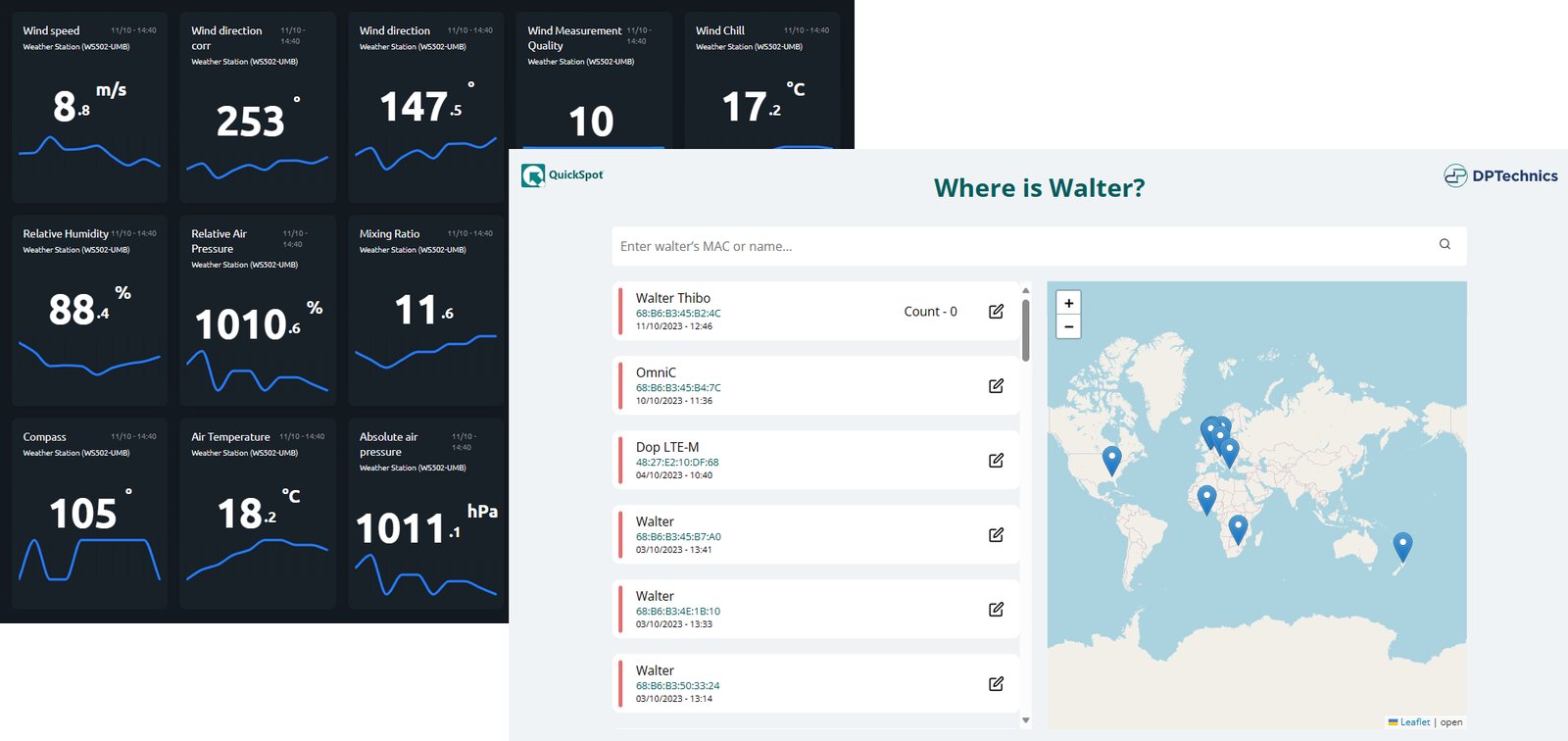
The examples above are only the tip of the iceberg. Our team is already thinking about pet trackers, ticket printers for online-delivery services, IoT access-control systems, and remote pump controls, among other possible applications. And we can’t wait to hear your ideas as well!
Features & Specifications:
- ESP32-S3-WROOM-1-N16R2 microcontroller:
- Xtensa dual-core 32-bit LX7 CPU
- 16 MiB quad SPI flash memory
- 2 MiB quad SPI PSRAM
- 150 Mbps 802.11 b/g/n Wi-Fi 4 with on-board PCB antenna
- 2 Mbps Bluetooth 5 Low Energy with on-board PCB antenna
- Sequans GM02SP 5G modem:
- Dual-mode LTE-M / NB-IoT (NB1, NB2)
- 3GPP LTE release 14 (Upgradable up to release 17)
- Ultra-low, deep-sleep mode in eDRX and PSM
- Adaptive +23 dBm, +20 dBm and +14 dBm output power
- Integrated LNA and SAW filter for GNSS reception
- Assisted and non-assisted GNSS with GPS and Galileo constellations
- Integrated SIM card
- Nano-SIM card slot
- u.FL RF connectors for GNSS and 5G antennas
- Inputs & outputs:
- 24 GPIO pins for application use
- UART, SPI, I²C, CAN, I²S, and SD available on any of the GPIO pins
- ADC, DAC, and PWM integrated in ESP32-S3
- 3.3 V software-controllable output
- USB Type-C connector for flashing and debugging
- 22 test points for production programming and testing
- On-board reset button
- Power supply
- 5.0 V via USB Type-C
- 3.0 - 5.5 V via Vin pin
- Not allowed to use both power inputs simultaneously
- Designed for extremely low quiescent current
- Form factor
- Easy to integrate via 2.54 mm headers
- 55 mm x 24.8 mm board dimensions
- Pin- and footprint-compatible with EOL Pycom GPy
- Breadboard friendly
- Software
- Libraries for the Espressif IDF
- Libraries for the Arduino ecosystem
- Libraries for the MicroPython
- Future support and libraries for Toit
- Natively supported in the BlueCherry.io IoT platform
- We are open to other suggestions
- Certifications
- Industrial temperature range of -40°C to +85°C
- Designed and manufactured in the European Union
- Ten-year availability guarantee
- CE (Europe), UKCA (UK), FCC (US), IC (Canada), RCM (Australia and New-Zealand)
Pinout Diagram:

- 1 x Walter - A certified ESP32-S3 module with LTE-M, NB-IoT, and GNSS for prototyping and production
- Kit:
- Walter
- Antennas
- 250 MiB worldwide Soracom SIM card
- USB Type-A to Type-C cable
- USB Type-C to Type-C cable
Walter - A certified ESP32-S3 module with LTE-M, NB-IoT, and GNSS for prototyping and production
- Product Code: NR-CS-Walter-ESP32-S3
- Reward Points: 112
- Availability: In Stock
-
रo 11,222.00
- Price in reward points: 11222
-
- 2 or more रo 10,077.00
- 3 or more रo 9,648.00
- 6 or more रo 9,223.00
- 13 or more रo 8,962.00
Available Options
Related Products
SenseTemp
SenseTemp is an open source, four-channel temperature sensor designed for instrumenting electronics...
रo 9,923.00
Qomu an MCU + eFPGA dev kit
The QuickLogic EOS S3 SoC on Qomu integrates an Arm Cortex-M4F MCU and an embedded FPGA (eFPGA), whi..
रo 6,674.00

